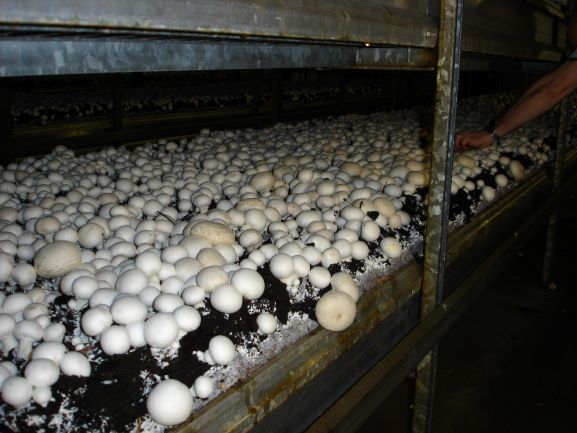Please click here to access the main AHDB website and other sectors.
- Home
- Knowledge library
- Brown Cap Mushroom Virus: Sources of infection
Brown Cap Mushroom Virus: Sources of infection
The key to stopping the spread of Brown Cap Mushroom Virus is to understand how it is transmitted. Find out what you can do to avoid it spreading.
How the virus spreads
Brown Cap Mushroom Virus spreads via infected mycelium, spores, compost or casing fragments (from the top layer of soil).
The virus is most likely to be spread during tunnel emptying and room filling, when the compost is exposed.
If spent compost and casing are effectively cooked out by steam sterilisation, the mushroom mycelium, which carries viruses, will be killed.
Identifying infection points
You only need a tiny amount of infected material for a virus to spread. Viruses move quickly, spreading through the depth of compost on a shelf in less than two days. The more infection points there are in the process (filling heads, conveyors, rufflers, etc.), the worse the impact will be on crops.
- Infected compost debris can infiltrate Phase 3 tunnels at spawning or during the spawn run
- Infected Phase 3 compost can infect transport vehicles and filling equipment, especially conveyors and filling heads that are difficult to clean
- Infected crops that are not steam sterilised will generate a high load of contaminated compost and casing fragments. These will be deposited throughout the farm and on filling and casing machinery, equipment and haulage trucks
- Infected compost and casing fragments deposited around the farm or compost facility can be blown around on windy days to reinfect cleaned conveyors, machinery, equipment and haulage trucks
Useful links
See the symptoms of Brown Cap Mushroom Virus
Read about prevention, detection and control of Brown Cap Mushroom Virus
Read about the research and information resulting from the MushTV project

Typical browning symptoms of Brown Cap Mushroom Virus

